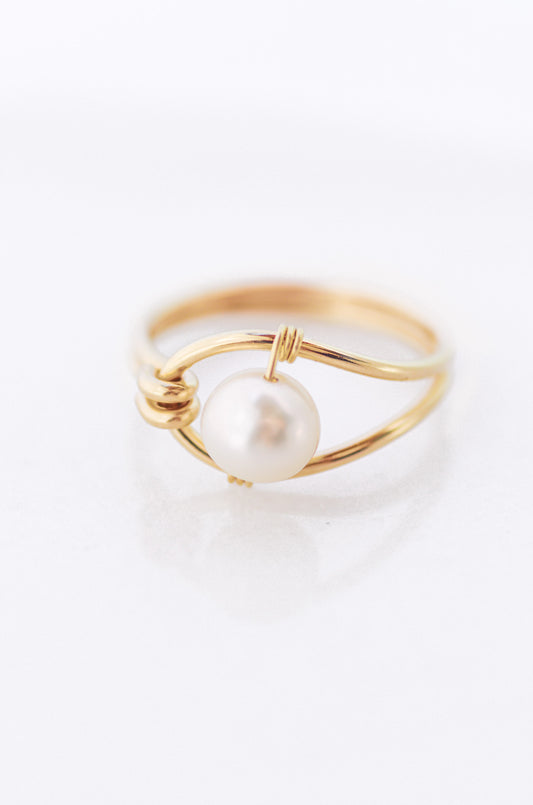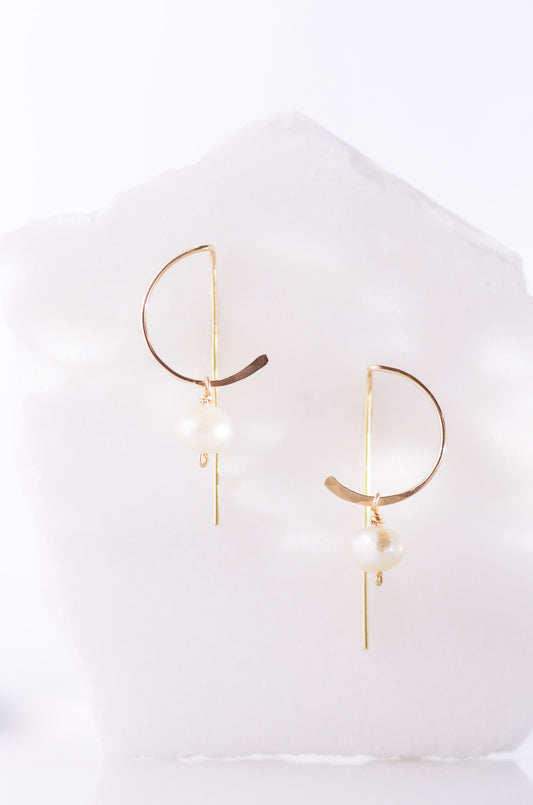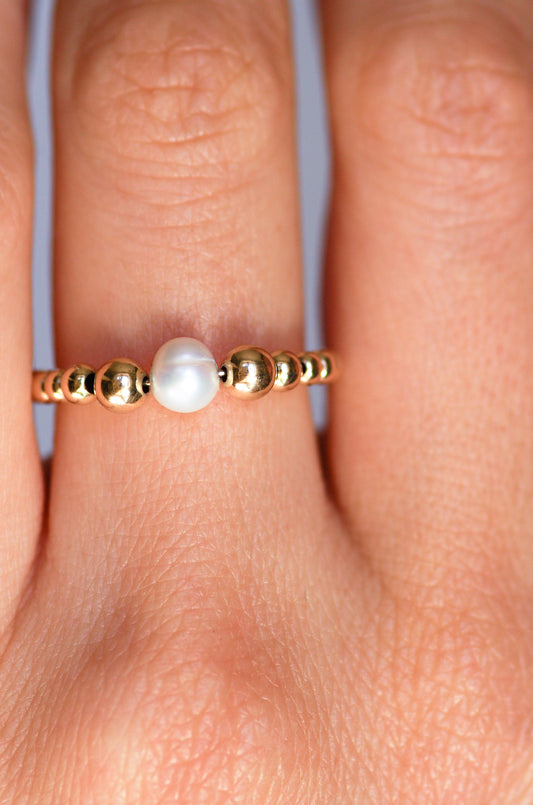Red Flags in 'Sustainable' Jewelry Claims
Teilen
Buying jewelry that claims to be "green" or "ethical"? Be cautious. Many brands use vague marketing terms, lack transparency, or exaggerate their efforts. Here’s what to watch for:
- Vague language: Terms like "eco-friendly" or "responsibly made" often lack proof.
- Opaque sourcing: If brands can’t trace where their metals or gemstones come from, it’s a red flag.
- Single-focus claims: Highlighting one aspect (e.g., recycled gold) while ignoring others (e.g., labor conditions).
- Fake certifications: Some labels may not guarantee true ethical practices.
Instead, look for brands that provide clear details about their materials, processes, and certifications. This ensures your purchase aligns with your values.
Common Red Flags in Jewelry Sustainability Claims
When shopping for sustainable jewelry, it’s important to recognize warning signs that suggest a brand might be exaggerating its ethical practices. These red flags often reveal attempts to cash in on growing environmental awareness without making meaningful changes.
Unclear or Unverified Sustainability Claims
One of the most obvious red flags is the use of vague marketing language. Words like "eco-friendly", "ethical", or "sustainable" are often thrown around without any clear explanation or evidence to back them up [1][2].
These broad claims can be misleading because they don’t provide enough detail to determine if the brand is genuinely committed to sustainability [1][2].
Be cautious of phrases like:
- "Responsibly made" without any explanation of the production process
- "Green" or "eco" without clarifying the specific environmental benefits
- "Natural" when referring to metals or other materials
- Generic symbols or imagery that imply sustainability without proof
In fact, the Federal Trade Commission has already issued warnings to jewelry companies for making deceptive sustainability claims. These actions have prompted some changes in industry practices [3].
Lack of Transparency in Materials and Sourcing
Another red flag is a lack of transparency about sourcing. Authentic sustainable brands are open about their supply chains. If a company avoids disclosing where their materials - like metals, gemstones, or pearls - come from, it’s a sign they might be hiding unsustainable practices [1][2].
Brands that fail to provide traceability details, such as the mine of origin or certifications, may not be as ethical as they claim.
Key questions to ask include:
- Where do your metals come from?
- Can you share documentation for your gemstone sources?
- What certifications do your materials have?
- How do you ensure ethical practices throughout your supply chain?
If a brand can’t give clear and detailed answers, it’s probably best to look elsewhere. Reputable sustainable jewelry companies are usually eager to share this information and demonstrate their commitment to ethical practices.
Overemphasis on a Single Sustainability Factor
Some brands focus on one positive aspect of sustainability while ignoring others, which can be misleading. Highlighting a single factor, like using recycled gold, doesn’t necessarily mean the entire operation is ethical or environmentally sound [2].
For example, a company might advertise recycled metals but still use toxic chemicals in plating processes or fail to address unethical labor conditions. Similarly, claims of carbon neutrality may rely on offsets that don’t actually reduce emissions [3].
Examples of single-factor claims to question:
- Recycled metals (but what about the production process?)
- Carbon-neutral shipping (but what about emissions from manufacturing?)
- Conflict-free diamonds (but what about their environmental impact?)
- Fair trade gold (but what about the other materials used?)
True sustainability means addressing every stage of a product’s lifecycle. Brands like Rays & Riches set a strong example by tackling multiple aspects of sustainability at once. They use ethically sourced and repurposed materials, avoid harmful chemical processes, and maintain transparency about their production methods.
Recognizing these red flags can help you navigate the complex world of sustainability claims. Genuine sustainable jewelry goes beyond surface-level promises, addressing environmental impact, ethical sourcing, and social responsibility at every step of the process.
How to Identify Genuinely Sustainable Jewelry
When it comes to truly sustainable jewelry, transparency, ethical sourcing, and responsible production practices are key. Genuine sustainable brands go beyond surface-level claims, ensuring their processes and materials reflect a commitment to ethical and environmental values. Let’s break down what sets them apart.
Chemical-Free Production Methods
A major hallmark of sustainability lies in how jewelry is produced. Many traditional manufacturing methods rely on chemical plating and bonding, which can release harmful toxins into the environment and pose risks to both workers and consumers. Sustainable brands avoid these harmful practices, opting instead for safer alternatives like heat and pressure bonding. These methods not only eliminate the need for chemical adhesives and toxic plating solutions but also create safer, more durable products.
This is particularly important for people with sensitive skin. Residues from conventional plating processes can cause allergic reactions or irritation. Take Rays & Riches, for example. They use a gold bonding technique that relies entirely on heat and pressure, creating a gold layer 100 times thicker than standard plating - offering both durability and safety without involving harmful chemicals. Brands committed to sustainability are usually transparent about their chemical-free production methods, making it easier for consumers to make informed choices.
The focus on clean production naturally extends to the materials used in crafting these pieces.
Repurposed and Ethically Sourced Materials
The choice of materials in jewelry has a significant impact on the environment and society. Repurposing vintage gemstones and pearls is one of the most effective ways to reduce this impact. By reusing existing materials, brands can avoid the environmental damage caused by new mining operations, such as habitat destruction and water pollution, as well as the exploitation often linked to traditional gemstone mining. Similarly, repurposing pearls helps prevent disruptions to marine ecosystems caused by harvesting.
For materials that can’t be repurposed, ethically sourced alternatives are the next best option. These materials are obtained in ways that minimize harm to both ecosystems and local communities. To assess a brand’s commitment, look for detailed and transparent information about the origins of their materials. Authentic sustainable brands, like Rays & Riches, often provide documentation tracing the history of their repurposed resources, reinforcing their dedication to a circular economy.
But sustainability doesn’t stop at sourcing; it’s also reflected in how each piece is crafted.
Genuine Handmade Craftsmanship
Handmade jewelry stands out for its personal touch and minimal waste. Crafted in small batches by individual artisans, these pieces often feature slight variations, showcasing their unique, handcrafted nature. This approach not only ensures higher quality control but also fosters a stronger connection between the maker and the customer.
Key signs of authentic handmade craftsmanship include:
- Opportunities to directly communicate with the maker
- Clear transparency about the creation process
- Small production runs
- Slight variations between pieces of the same design
- Thoughtful, personalized touches in packaging or correspondence
Rays & Riches exemplifies this philosophy by producing all their pieces through a single artisan. This ensures a personal connection, reduces waste associated with mass production, and guarantees meticulous attention to detail. Be cautious of brands that claim to be handmade but churn out large quantities of identical items - this often signals mass production disguised as artisanal work.
sbb-itb-2024ddf
Spotting Fake Certifications and Misleading Labels
The jewelry industry is awash with certifications and marketing claims, many of which lack real substance. Being able to separate legitimate credentials from misleading labels is essential if you're aiming to make informed, ethical choices.
Checking Certification Credibility
When it comes to sustainability, not all certifications are created equal. Some may appear credible but fail to deliver on their promises. It's worth digging deeper into who issues these certifications and what they actually evaluate. This step is crucial to avoid falling for labels that might look impressive but don't truly stand for ethical practices.
A Closer Look at the Responsible Jewellery Council (RJC)
One example to be cautious about is the Responsible Jewellery Council (RJC). While its logo is widely displayed by major brands, the RJC is essentially a trade organization run by and for the big players in the jewelry industry. Critics have pointed out that the RJC certifies companies as a whole rather than individual products, leaving room for significant gaps. These include ignoring conflict zones, failing to set clear pollution limits, and overlooking the need for indigenous consent.
Even well-known certifications like the Kimberley Process have their shortcomings. This certification, for instance, focuses narrowly on preventing the funding of conflicts but doesn’t address other critical issues like environmental damage or labor conditions. On the flip side, smaller ethical jewelers often can’t afford the steep costs of certifications, even if their practices are genuinely sustainable.
The key is to look for brands that go beyond flashy logos. Seek those that provide detailed information about their sourcing, manufacturing processes, and supply chains. Be wary of brands that rely solely on certifications without offering transparent answers to specific questions about their practices. A lack of clarity often signals greenwashing.
Misleading Marketing Terms to Avoid
Jewelry marketing is rife with buzzwords designed to sound ethical or eco-friendly, but many of these terms can be misleading. Words like "all-natural", "eco-friendly", or "green" should raise a red flag if they aren’t backed by solid evidence or certifications. As Simone Walsh Jewellery aptly states:
"Greenwashing is absolutely a thing and we all stand to benefit if it goes away." [4]
Be cautious of claims that focus on product features like "waterproof", "hypoallergenic", or "tarnish-free" as indicators of sustainability. These are often just functional attributes and don’t necessarily reflect ethical or environmentally responsible production.
The diamond industry is particularly notorious for its use of deceptive language. Phrases like "diamonds made entirely from the sky" or terms like "real diamonds" and "sustainable diamonds" are often used without clarifying whether the stones are synthetic, laboratory-grown, or laboratory-created. Transparency is key here - if brands aren’t upfront about the origin of their diamonds, it’s worth questioning their claims.
Some brands also make irrelevant ethical statements, such as labeling jewelry as "vegan." While it’s true that most jewelry doesn’t contain animal products, this claim is often a superficial attempt to appear eco-conscious. Similarly, vague mentions of "recycled metals or diamonds" without specifying sourcing details, processing methods, or the percentage of recycled content can be misleading. True sustainability involves transparency across the entire production process - not just one isolated aspect.
For a more reliable approach, focus on brands that provide clear, verifiable details about their practices. Take Rays & Riches, for instance. They don’t just claim to be sustainable - they explain their chemical-free bonding process in detail and offer insights into how they repurpose materials. This level of openness sets a standard for what genuine sustainability should look like. Buzzwords and vague claims simply can’t compare to transparency backed by facts.
Conclusion: Making Informed Jewelry Choices
Choosing sustainable jewelry requires careful research and a healthy dose of skepticism. The issues highlighted earlier reveal just how pervasive greenwashing has become in the industry. Many brands rely on vague claims, questionable certifications, and selective transparency to win over environmentally conscious buyers.
To truly make informed decisions, it’s essential to dig deeper into specifics about sourcing, production methods, and labor practices. Your best ally in this effort is thorough research. The Federal Trade Commission has been called upon to address misleading terms like "sustainable" and "recycled" in jewelry marketing because so many claims lack substantiation [3]. If a company dodges questions or leans heavily on buzzwords without providing concrete details, it’s a clear sign to look elsewhere. This focus on specifics is what enables consumers to make better, more informed choices.
Smaller, transparent brands often provide a more ethical alternative to large corporations with flashy marketing. These smaller players tend to have tighter control over their supply chains and are more likely to embrace ethical practices. For instance, Rays & Riches stands out by using a chemical-free gold bonding method that relies on heat and pressure while repurposing vintage materials to avoid the harmful effects of mining.
Supporting brands that prioritize genuine transparency allows consumers to drive meaningful change. When you choose companies that value real sustainability over empty marketing promises, you’re actively shaping the future of the industry. True sustainability considers every step of the process - from material sourcing and packaging to worker rights and environmental impact.
While the jewelry industry won’t transform overnight, informed consumers are already pushing it in the right direction. By staying alert, asking tough questions, and supporting brands that prove their commitment through action, you’re contributing to a more ethical and sustainable future for everyone.
FAQs
What should I look for to confirm a jewelry brand's sustainability claims?
To verify a jewelry brand's sustainability claims, pay attention to how openly they share details about their sourcing and production practices. Look for clear information on materials, such as whether they use ethically sourced metals, recycled gemstones, or repurposed materials. Brands that provide thorough explanations of their processes, including steps taken to reduce environmental impact, demonstrate a stronger commitment to sustainability.
Check if the brand adheres to established sustainability standards or certifications. While not every brand will hold formal certifications, they should still show accountability and traceability across their supply chain. If you're unsure, don’t hesitate to ask questions - brands dedicated to sustainable practices are generally transparent and willing to share insights.
Another key factor is the durability and ethical craftsmanship of their jewelry. Pieces crafted without harmful chemicals or made using waste-reducing techniques signal a genuine effort toward sustainability. High-quality design combined with responsible practices not only supports the environment but also ensures the jewelry is built to last, making it a thoughtful and lasting investment.
What certifications should I check for when choosing sustainable jewelry?
When choosing sustainable jewelry, it's essential to check for certifications that confirm ethical practices and a commitment to the environment. Two key certifications to keep in mind are the Responsible Jewellery Council (RJC), which guarantees adherence to rigorous social, ethical, and environmental standards throughout the supply chain, and Fairtrade, which advocates for fair wages and responsible sourcing.
Another important certification is ISO 14001, which reflects a brand's compliance with environmental management standards, showing they actively work to minimize their ecological impact. These certifications offer clarity and confidence, helping you make thoughtful and responsible jewelry purchases.
Why is transparency about sourcing and production important in sustainable jewelry?
Transparency plays a crucial role for sustainable jewelry brands, as it fosters trust and helps consumers make well-informed decisions. With growing awareness around ethical concerns and environmental challenges, people now expect brands to clearly explain where their materials come from and how their jewelry is made.
When brands openly share details - like using ethically sourced gold or repurposed gemstones - they show a genuine commitment to minimizing environmental impact and raising industry standards. This openness not only highlights the brand's principles but also gives customers the power to back responsible and sustainable practices.







